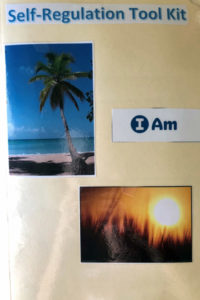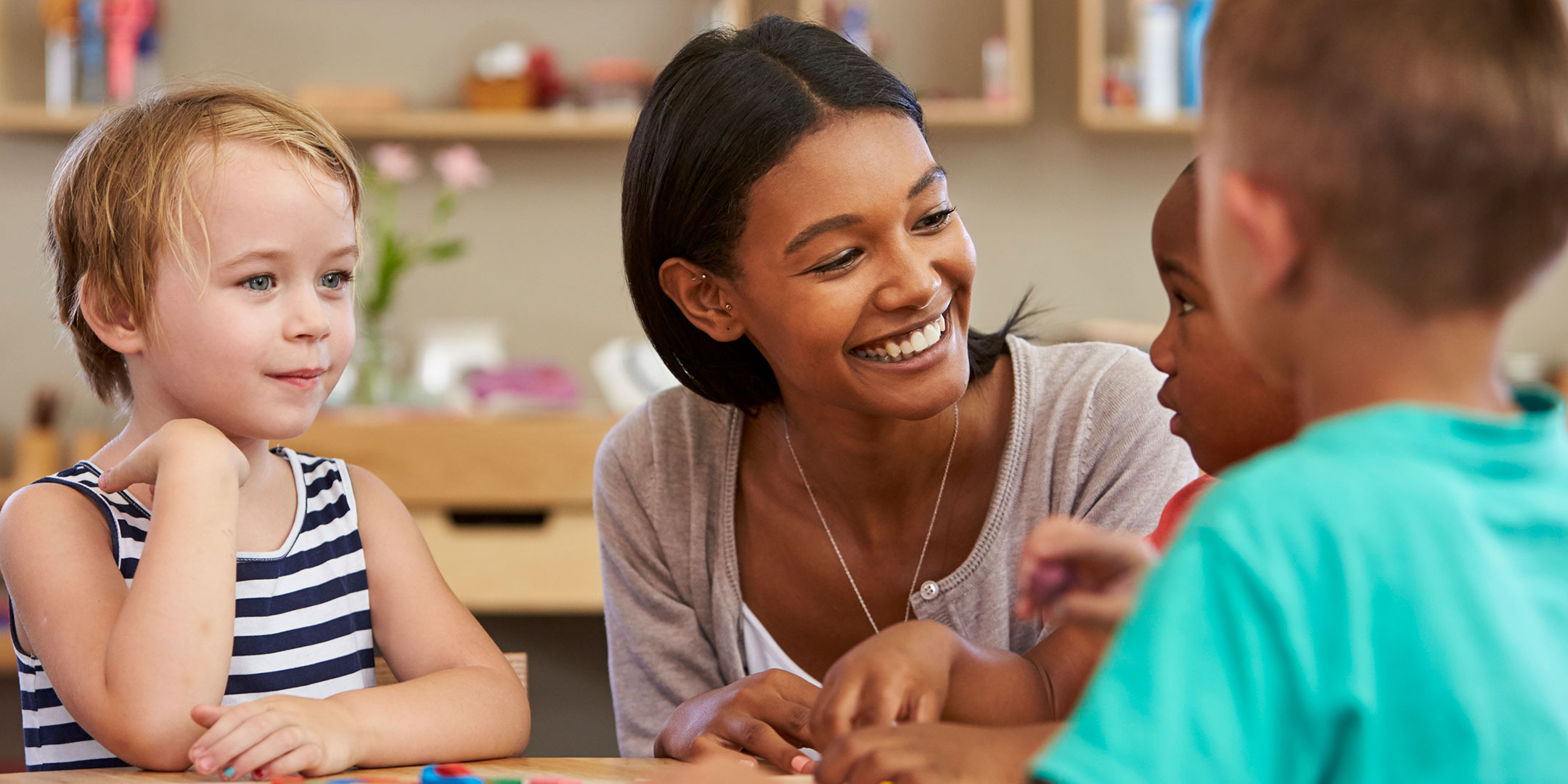To transform our classrooms into optimal learning environments, we must teach more than academic skills. It’s vital to teach social skills to our students as well.
If you’re thinking there’s no time to cram anything else into your already busy day, don’t worry. You can teach social skills within the context of everyday conflicts. You can also infuse them into academic content, as you’ll see in the self-regulation writing activity included in this article.
Why Teach Social Skills?
Most of the content taught in school builds from kindergarten all the way through high school. This, however, is not the case when it comes to teaching students how to manage emotions in a safe way. Often, it’s expected that students have learned how to manage emotions “by now” at every grade level. Teaching social skills is not included in lessons or practice stations for the day.
The danger with this mentality is that managing emotions in a safe way becomes a “missing skill” with a gap that widens over the years.
This means that students are not gaining new skills to use when someone is mistreating them, when they have to handle the social pressures of the day, or when they want to support a friend who needs help. These valuable life skills are essential in the social setting of school.
In addition, these skills help with challenging math or reading content. Once children learn to manage emotions and stress, they can focus and learn. Self-regulation should be explicitly taught and practiced daily, just like academic content.
Students communicate the social skills they are missing through the conflict seen in the classroom, when refusing to do work, or through the exclusion tactics that show up on the playground.
These moments are mislabeled as “misbehavior” and seen as intentional, disrespectful, or defiant. They are dealt with using punishments or loss of privileges. Assuming that students know how to handle these issues prevents adults from teaching valuable missing skills that can be practiced and developed through problem-solving in context.
Students bring into the classroom the only skills they have to handle frustration or sadness. Helping them create new, healthy coping strategies within the School Family strengthens relationships and provides better problem-solving skills to use throughout the school day.
How to Teach Social Skills Alongside Academics
Typically, learning to see conflict as an opportunity to teach missing skills is an approach that isn’t valued or taught in school. This isn’t because teachers don’t want to teach these skills. They just aren’t sure how or when to teach them. Infusing social and emotional lessons into the academic day provides teaching moments previously seen as an interruption to learning.
Teaching these strategies when students are calm creates a learning environment of unity. Students learn these important new skills in the same way they learn most academic content: through partner sharing. As they hear how their peers handle emotions, children naturally become more aware of how they handle their own emotions. They can then hear and share ideas of safe ways to process those emotions while staying in the classroom.
Many students struggle academically but feel embarrassed to ask for help, so they may “act out” to get sent out of class instead. Providing a new strategy for students to manage the upset first so that they can ask for help in a safe way can transform your classroom behavior while building self-regulation skills through connection.
Infusing this lesson into a writing unit teaches all students the “why and how” of this process. When they need to use these new skills throughout the day, it will seem more acceptable and natural to the whole class.
 |
 |
 |
|---|
Free Lesson: 5 Steps of Self-Regulation Writing Activity
The writing lesson below was developed to teach children in 3rd grade and up the process of self-regulation using a file folder of specific strategies. Students create the file folder as a helpful tool to use when they feel triggered.
These file folders get laminated and are kept in students’ desks. Students use the file folders as a “picture clue” of how to soothe the lower centers of the brain so that they can manage big emotions safely. These folders are similar to the word walls and math walls around the room that help students when they forget important information.
The inspiration for this self-regulation tool kit comes from Conscious Discipline: Building Resilient Classrooms by Dr. Becky Bailey. The folder was created from information in Chapter 4: The Skill of Composure. Dr. Bailey’s book can be used to support teaching reading, writing, science, and social study lessons that will help students become aware of what they can to do to change their own behavior. Once these skills are infused into academic content daily, it becomes more natural to “coach” students through conflict instead of using rewards and punishment strategies to try to change behavior. This self-regulation folder is a helpful tool for coaching students using the things that they value and find comforting.
Instructions: 5 Steps of Self-Regulation Writing Activity
1. Think of some things that “trigger” you and cause you to get upset. Write some of these triggers down on your paper. Share your triggers with a partner and discuss how you usually handle your emotions when these things happen to you, either at school or at home.
2. Think of a place that is calming or soothing to you that would help you calm down if you felt triggered. When thinking of this place, your body relaxes. Examples may be the beach, mountains, a sports court or field, etc. Share your thinking with a partner.
3. Draw a picture of this place and add color and detail. You may also choose to print out pictures to create this calming place.
4. Using the information you have learned about the brain states from Chapter 2 (Conscious Discipline Book), organize this section in a way that will help you remember the skills you have access to when you are operating from each brain state. Share with your partner the strategies you can use to get to a higher brain state. Revisit the things that trigger you and identify which brain state you may be operating from during those times.
5. When you are triggered, think about your breathing and focus on exhaling longer than you inhale. Taking three deep breaths will turn off the fight or flight response that your brain has signaled for help.
6. Draw a symbol that will represent taking three deep breaths. For example, draw a star or anything that will remind you to breathe. Some students have made up different breathing strategies such as “Batman breathing” or “Dab breathing.” Share with your partner breathing strategies you have created or create one together.
7. Think of a feeling that enters your mind when you are triggered. Name it. For example, it could be sad, mad, scared, frustrated, disappointed, or angry. What happens in your body when that feeling is triggered? Where can you feel that energy in your body? Share with your partner how you usually handle that feeling.
8. Draw a symbol or feeling face to represent those feelings. When those feelings appear, how do you help your body handle them? Add color and detail.
9. Think of the things that you do to help yourself handle emotions when you are feeling triggered. These things may help move you from the lower centers of the brain to the higher centers. It might be listening to music, doing something active, reading a book, or drawing. These activities help you get back on track and handle the rest of the day, even if you still feel triggered. Share with your partner what you do at that moment to help get back on track during the school day.
10. Draw a picture or print out images of at least 3-4 activities that help you reframe the events that have triggered you and get back to learning. Add detail and color.
11. Now think of how you could solve the problems that come up so that you can do things differently next time. Share with your partner the four ways to safely solve a problem discussed in class. 1. You may need to ask a question or ask for help, 2. Practice breathing when things do not go your way, 3. Learn a new way to handle something for the next time, or 4. Problem-solve with someone.
12. Draw a symbol or picture that will help you remember your options when you are ready to solve the problem that triggered you in the first place.
13. This tool will give your “unconscious lower centers of the brain” picture clues of what to do when you are stressed or triggered. These strategies will help you get to your “conscious higher centers of the brain” to make a safe choice. Using this tool when you are upset will help your conscious brain come back online so that you can handle the upset without having to leave the room. It will also help teach your brain how to calm down so that you can remember the strategies without the tool.
Final Thoughts
To create a calm, connected, and optimal learning environment, it’s necessary to teach social skills. This practice doesn’t have to take away from academics. In fact, teaching social skills enhances your students’ ability and willingness to learn.
You can teach social skills in the context of daily classroom conflict. In addition, you can infuse social and emotional learning into academic activities. This writing lesson is just one example of how SEL and academics can go hand-in-hand. As you teach social skills alongside academics, you’ll improve your classroom environment and equip your students with valuable skills that will last a lifetime.
Upcoming Events
- Conscious Discipline Institute: Birth to Five Years: Education Event in Las Vegas, NV
- Conscious Discipline Institute in New Albany, IN: Summer Educator Event
- Conscious Discipline Advanced Institute in Navasota, TX: Advanced Educator Event
- Conscious Discipline Institute in Madison, WI: Summer Educator Event
- Conscious Discipline Institute: Birth to Five Years: Summer Education Event in Orlando, FL
- Conscious Discipline Institute in Cincinnati, OH: Summer Educator Event




